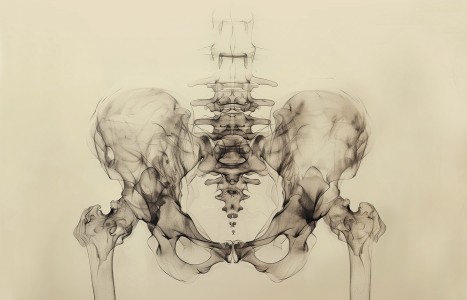People today want convenience, whether it be from their bank, credit card, favorite retail store, or restaurant. They demand it from the companies who hold their loyalty, including their health care providers (you). They don’t want to call and possibly be put on hold, and they want to use an app or schedule an appointment on your website. Here are three reasons your practice can gain by switching to online appointment scheduling.
Busting Taboos About Breast Cancer, Part Two
While planning part two of this series, I heard a clip on ABC-TV about a new study claiming that people who exercise are 35 percent less likely to develop cancer. Those who exercised a lot as teenagers are at an even lower risk of developing breast cancer. Well, I'm an exception to this "comforting" news! I have always been athletic. As a teenager, I played field hockey for my school and university. I was a fitness "nut" when my cancer was diagnosed. Being fit and a vegetarian may not have prevented my cancer, but they certainly helped my survival!
Somehow, the universe had unusual ways of prepping me for this experience. As a zen shiatsu practitioner, I treated several cancer patients before my own cancer diagnosis. I learned about the valuable role played by the Stomach and Pericardium meridians in the "scaffolding" of the breast, and in helping ease pain postmastectomy. I learned the value of treating and stretching the lower extremities to help ease the discomfort of patients who couldn't be touched around the torso or arms in the days immediately following surgery. I learned the value of teaching slow qi movements to patients to help stimulate circulation and qi flow postanaesthesia, and to prevent lymphedema. I learned the value of treating the hara and back shu points to stimulate peristalsis. Moreover, I gained great respect for the effectiveness of simple qigong techniques to help harmonize qi fragmented by surgery or organ removal.
I also learned the value of working subtle points on the hands and feet of a terminally ill breast cancer patient hooked up to assorted machines in the hospice at Cabrini Hospital in New York City. I learned the value of talking her through her interpretation of death to help ease her passage according to her belief system. During those last few days, we were able to connect on levels she had been unable to achieve with close family members. I was the outsider, the one without baggage. In the hours when she drifted in and out of consciousness, I placed a single red rose in a vase opposite her bed in direct view, to give beauty to those brief moments when she opened her eyes. I also connected with an amazing hospice nun, Sister Loretta, who used to dress up as a clown at night and drift between the beds to chat to patients with insomnia.
Some five years later, I'd had my mastectomy in that same hospital. During that same week, a close friend of mine died of metastatic breast cancer in another part of the city. During the previous year, I learned the value of giving her subtle shiatsu and qi focus to ease pain in her legs by minimizing touch after the cancer metastasized to her bones.
Roll the clock back even further to my years as an investigative journalist on Fleet Street in London, England, when I campaigned against the tobacco companies during the days when they denied any link between smoking and lung cancer. My research prompted me to write Dominion, a fictional but realistic view of the cynical ways the industry developed marketing and advertising strategies to beat or flaunt smoking-related diseases or death. My research helped prepare me for the dramatic lung cancer deathbed scene of my uncle, which I described in Dominion. The book also described a court case in which a widow sues the tobacco conglomerate following the smoking-related death of her husband. Before the work was published in the U.S. and Canada several publishers rejected it on the grounds that it was "unbelievable." Such court cases have become commonplace in the last five years, prompting me to republish the book through iUniverse.
My resulting knowledge of smoking-related diseases helped me develop special shiatsu techniques for a dear friend, "Geo," who died recently from lung cancer in England. To ease her coughing spasms, I encouraged Geo to sit up while I focused qi on front mu points for the Lung (L 1) when she couldn't be touched. When Geo welcomed touch, it was helpful to support back shu points UB 13 (Lung) and UB 14 (Pericardium) and front mu for Pericardium (Ren 17) simultaneously. P6 and P 8 helped treat nausea, and helped calm her during coughing fits or anxiety spells. Geo required a minimum of movement, techniques and points. Another patient with a similar prognosis may react very differently. As always, adaptability is the key. Laughter helped her move congestion, except for a moment when she spluttered into her oxygen mask: "Ferguson, forget about cancer. Your jokes are going to kill me!" When side-effects from morphine included constipation, it was helpful to apply subtle shiatsu to Geo's back, feet and hands (especially LI 4).
Just before I left England, I talked to her palliative physician about acupuncture, to ensure the continuity of my treatments. His minimal needling helped her a great deal. Many palliative physicians in England are trained to integrate specific acupuncture techniques (among other procedures, like compassionate counseling and working within family structures) for the specific purpose of easing pain, discomfort and distress in terminally ill patients, especially those who cannot handle morphine.
I share these assorted experiences with my students as a way of encouraging a holistic, compassionate and practical approach, tuning into the needs of each patient as an individual. I tell them to avoid preconceptions, and certainly to avoid any "recipe" approach. What worked for patient X may be inappropriate for patient Y, even though the prognosis is similar. I (and a number of fellow cancer survivors) find it offensive when we are "lumped" together in sweeping generalities about "treatment procedures for such-and-such cancer patients." I certainly know that after my experience, I was extremely fussy about who worked on me (whether the care delivered was shiatsu, needling or chiropractic). I avoided any practitioner who spouted assumptions and preconceived ideas about cancer causes or treatments.
Similarly, Wayne Mylin, Dipl. ABT (NCCAOM), CP (AOBTA), a gifted, sensitive shiatsu colleague and fellow AOBTA board member, shared his amazing experiences of working on patients undergoing chemotherapy at Pennsylvania Hospital's Joan Karnell Outpatient Cancer Center in Philadelphia. The center's administrators welcomed Wayne into an evolving CAM program, as they knew that the majority of cancer patients sought CAM therapies nationwide. They also knew Wayne based on his 17 years of experience as a psychiatric technician in the psychiatric unit. "I was hired for a three-hour block of time every Wednesday," Wayne told me. This involved great adaptability, during which time he had to give 35-minute chair shiatsu sessions to five different patients before, during and after chemotherapy. "The challenge was that after completing an assessment (pulse, tongue, clinical intake, etc.), I had to figure out how to give the session within the limitations of the chair." The most common symptoms he treated included fatigue, body aches, nausea, insomnia, depression, anxiety, flu-like symptoms, anger, frustration and fear. Ever modest about his shiatsu talents, Wayne said, "I have worked with patients where all I could do was lay my hands on their backs with minimal pressure, or work only on their hands, only to find that what I did made a notable - sometimes a dramatic - difference." His background in psychology has proved invaluable. "During treatments, many patients will start talking, sharing, unloading and expressing," he said, adding that he is often the only member of the treatment team able to give the patients 35 minutes of undivided attention.
With his group of patients, Wayne found the following techniques and points to be very helpful:
- back shu points (generally useful for a variety of problems)
- nausea and vomiting: P 6, H 7, St 36, and general footwork
- anxiety: P 6, H 7, shen ear point, Du 20 & 24 and sacrum, basically any supportive touch, and footwork
- depression: support (verbally and physically), back shu point balancing and tonifying
- vertigo: LI 4 & footwork
- yin deficiency: St 36
- rising heat: Liv 2
Wayne added, "It's necessary for any shiatsu therapists working in this (hospital) setting to be supportive of the Western medical treatment that the patients are receiving. If you are not supportive of chemo or radiation, don't even think of working in this setting. It is not fair to the patient."
Wayne's involvement in a pilot study on the effects of shiatsu on sleep disturbance in chemotherapy patients was discussed at a palliative care conference in Phoenix, Arizona earlier this year. He found the following points effective: all back shu points, St 36, GB 12 & 20, Du 20 & 24, H 7, P 6, and LI 4.
Gabrielle Mathieu, one of my graduates from the Academy of Oriental Medicine in Austin, came to some similar conclusions while writing her mammoth research thesis on shiatsu treatments on cancer patients undergoing chemotherapy (The Benefits of Zen Shiatsu for Cancer Patients, May 2000). Gabrielle wrote: "Shiatsu seems to be effective in reducing fatigue, helping insomnia and achieving relaxation. In selected cases shiatsu helped neuropathy, and abdominal distress." In her thesis, Gabrielle concluded, "As a generalization-I noted the Liver and Kidney meridians were often involved. Five of my six clients were postmenopausal women. The Kidney energy declines during menopause. I can only speculate that cancer and conventional treatments further weakened it. The Liver is associated with the smooth flow of emotions: Certainly the experience of having cancer would distress even the most calm individual. In Western medicine, of course, the liver and kidney have the burden of clearing the drug metabolites from the body." Gabrielle's thesis included her invaluable experiences of working as a cancer information specialist for the American Cancer Society, and her prior background working in hospitals and clinics as a medical technologist.
I include the aforementioned examples from the fresh experiences of Wayne (an accomplished, board-certified shiatsu practitioner) and Gabrielle (now a licensed acupuncturist and certified zen shiatsu practitioner), as both of them had the additional benefit of years of hospital experience. Both believe in integrative medicine. Certainly, I owe my own survival to a skillful blend of Western and Asian medicine, two remarkable Swiss physicians, shiatsu, yoga, cycling, swimming, qigong, acupuncture, a vegetarian diet, humor, five years of mistletoe injections (Iscador), six months of the mildest form of chemotherapy possible (Alkaran), a marvelous partner and support group, and my global teaching practice. All of this was achieved without health insurance! Even when my cancer metastasized, I told God to help me survive, in order to teach my students through this experience to help hundreds of other cancer patients - and to write articles like this.
Yours in qi.


